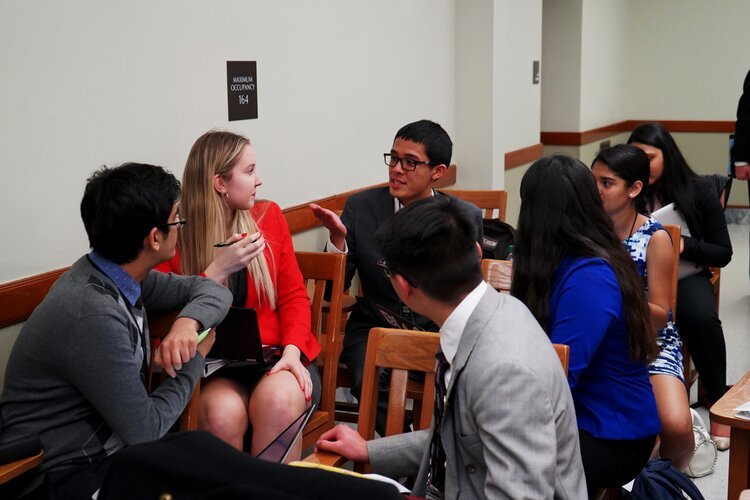Alternative Procedures
While most committees will be run on standard committee procedure as described in the previous section, some are run on special committee procedure, such as court committees, THIMUN committees, and crisis committees.
COURT PROCEDURE
Court committees will most likely be one of the more unique experiences you will have in Model UN, as you will not be representing a delegate sent by a particular state; instead, you will be representing a judge on a regional or international court from a UN member state and exercising your judgment on a simulation of a real historical crisis. In turn, the committee’s chairs will be serving as lawyers for the case. The committee’s debate will mainly revolve around discussions that you, the judges, will have regarding individual aspects of the case and deciding the merits of particular legal arguments and testimony.
Although typical parliamentary procedure rules still apply, this committee will follow additional special procedure. The court will not have a speaker’s list during debate, and its place only moderated and unmoderated caucuses will be used to drive debate forward. A major difference between this committee and a typical Bloc A or B committee is that the court will invite witnesses to testify before the court. Ten to twelve witnesses representing both sides will enter the committee throughout conference to testify and be questioned by the dais. Then, delegates will have the opportunity to ask them questions and use their testimony and any legal analysis they offer as evidence or fodder for debate.
Additionally, rather than working on resolutions to present to the committee, judges will work on verdicts which they will present individually. This should not be written in resolution format but rather as a judicial ruling along with an explanation for the verdict you have reached.
THE HAGUE INTERNATIONAL MUN (THIMUN)
The Hague International Model United Nations (THIMUN) Foundation is a Non-Governmental Organization that operates well-known MUN conferences around the world. These conferences function under a different set of procedural rules that is widely used in other international MUN conferences as well. At its core, THIMUN procedure is one focused mainly on coming up with well-developed, feasible solutions to the topics at hand. As such, this makes it an ideal procedural style for human rights committees, as issues are tackled immediately at the start of conference. Rather than opening a speaker’s list and writing resolutions during a caucus, debate in THIMUN begins with a completed resolution. The goal of debate is then to better the resolution through amendments and speeches, and ultimately, to pass it. It differs from standard BMUN procedure in this sense, as well as in structure and in the language used.
CRISIS PROCEDURE
There are several key differences between standard Bloc A/Bloc B committees and crisis committees, the biggest one being pacing. Instead of 200-person discussions that attempt to arrive at the best possible solution to one or two problems, you will instead work with and against 20-30 delegates to solve a never-ending slew of problems in a quick-paced fashion. In addition, all of them are single delegation and instead of representing countries, you will often represent characters or another non-country entity.
COMMITTEE STRUCTURE
To manage this quick pace, there are a few structural and procedural differences between a crisis committee and a regular one. For one, there is no speaker’s list. Instead, the committee is in a perpetual moderated caucus with a set speaker time. The committee can still choose to go into unmods or have moderated caucuses with different speaking times, but unless another option is selected the chair will call on delegates with their placards raised.
DIRECTIVES
Also, rather than pass resolutions, crisis committees pass committee directives, which have a few distinct differences. Committee directives still require signatories and sponsors and are voted on by moving into voting bloc (usually), but unlike resolutions they don’t require a pre-ambulatory clause, and often have one to four operative clauses, though they can be longer. These directives can also make real action instead of mere recommendations depending on the jurisdiction of the committee. In typical MUN resolutions, you can only suggest action.
Format:
Directive Title
Sponsors: Entity 1
Signatories: Entity 2, Entity 3, Entity 4, Entity 5
Recommends operative 1;
Moves to operative 2;
Decides operative 3.
PERSONAL DIRECTIVES
Perhaps the most fun difference between crisis committees and regular ones is the personal directive. Personal directives, unlike committee directives, can be made in secret and given directly to the head chair without being voted on by the committee. They are how a delegate exerts personal power. They can direct armies under their control, order spies to gather them information, or even order the assassination of another delegate (though the success rate on these is very low).
The outcome of every directive, both personal and committee, will be determined by the crisis backroom, who will attempt to keep the committee moving forward in a fun, but realistic, fashion. Procedurally, crisis committees are a lot simpler than regular committees, but the internal dynamics between the members of the committee and the nature of the topic change much quicker and more frequently. If you want to be successful in a crisis committee you must both be well researched and highly adaptable, as you never quite know what path the committee will go down.






